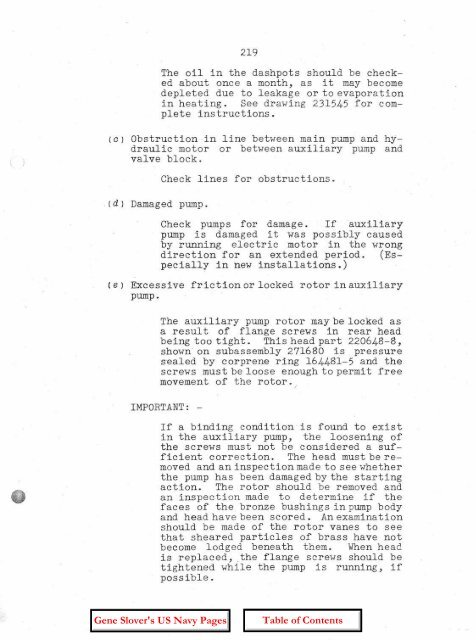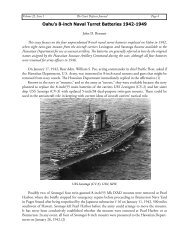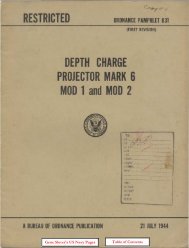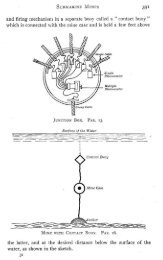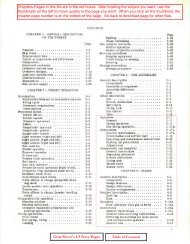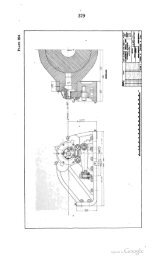OP-755 Part 2 Pages 197-401 - Personal Page of GENE SLOVER
OP-755 Part 2 Pages 197-401 - Personal Page of GENE SLOVER
OP-755 Part 2 Pages 197-401 - Personal Page of GENE SLOVER
You also want an ePaper? Increase the reach of your titles
YUMPU automatically turns print PDFs into web optimized ePapers that Google loves.
219<br />
The oil in the dashpots should be checked<br />
about once a month, as it may become<br />
depleted due to leakage or to evaporation<br />
in heating. See drawing 231545 for complete<br />
instructions.<br />
(e) Obstruction in line between main pump and hYdraulic<br />
motor or between auxiliary pump and<br />
valve block.<br />
(d) Damaged pump.<br />
Check lines for obstructions.<br />
Check pumps for damage. If auxiliary<br />
pump is damaged it was possibly caused<br />
by running electric motor in the wrong<br />
direction for an extended period. (Especially<br />
in hew installations.)<br />
(e) Excessive friction or locked rotor in auxiliary<br />
pump.<br />
The auxiliary pump rotor maybe locked as<br />
a result <strong>of</strong> flange screws in rear head<br />
being too tight. This head part 220648-8,<br />
shown on subassembly 271680 is pressure<br />
sealed by corprene ring 164481-5 and the<br />
screws must be loose enough to permit free<br />
movement <strong>of</strong> the rotor.<br />
IMPORTANT: -<br />
If a binding condition is found to exist<br />
in the auxiliary pump, the loosening <strong>of</strong><br />
the screws must not be considered a sufficient<br />
correction. The head must be removed<br />
and an inspection made to see whether<br />
the pump has been damaged by the starting<br />
action. The rotor should be removed and<br />
an inspection made to determine if the<br />
faces <strong>of</strong> the bronze bushings in pump body<br />
and head have been scored. Anexamination<br />
should be made <strong>of</strong> the rotor vanes to see<br />
that sheared particles <strong>of</strong> brass have not<br />
become lodged beneath them. Whenhead<br />
is replaced, .the flange screws should be<br />
tightened while the pump is running, if<br />
possible.


